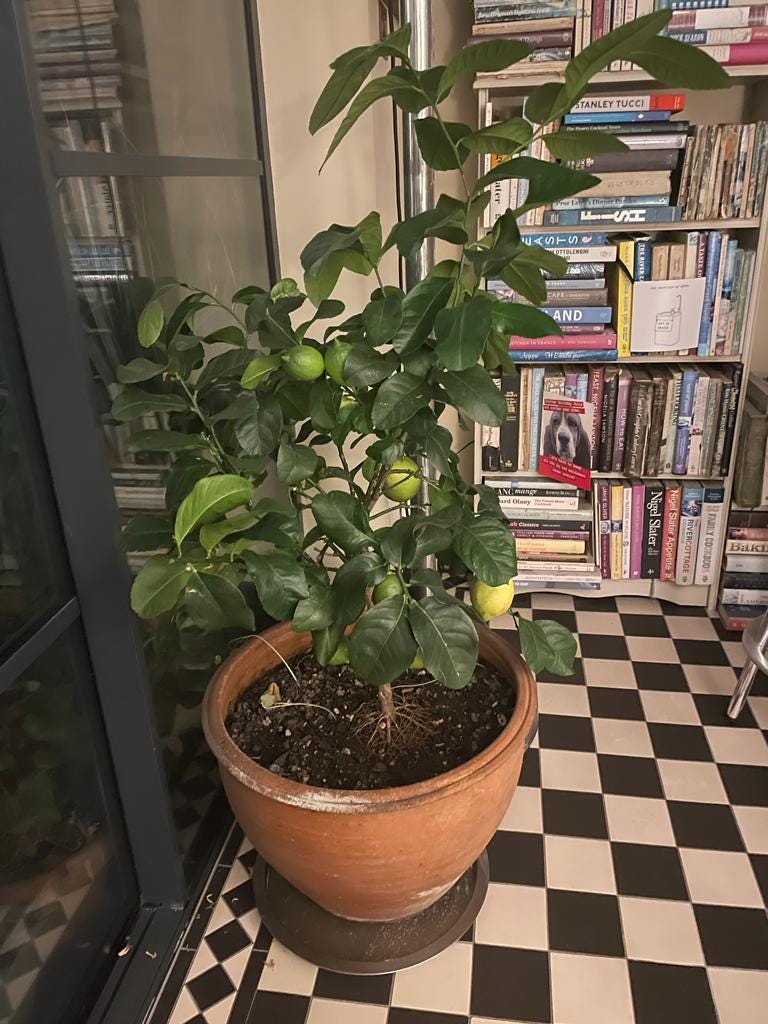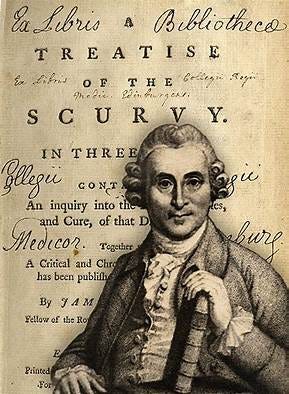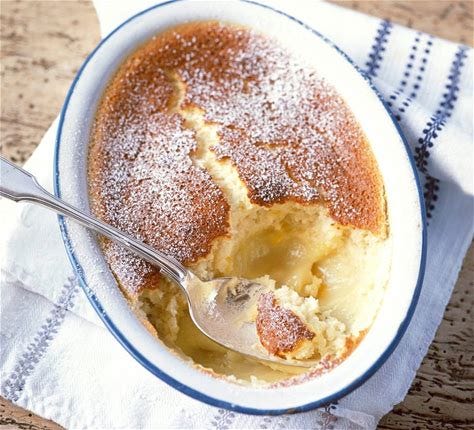I’m not a fan of indoor greenery - all those shelves in every room supporting pots of dangling, creeping ferns and leaves without which it seems no dwelling for sale on house-porn site The Modern House could possibly come to market. Been there, done that, first time round, back in the days of Macramé and turquoise canvas boots. Oh, right: macramé’s very Now again, too.
I do, however, have an indoor lemon tree, because if it were outside at this time of year, it would be dead. It was one of the best Christmas presents, the flowers scenting the room, and giving me six fruits in its first season, then more throughout the summer when it grew so happily outside, I had to lop it and give it a talking to, both severely. Now there are another six lemons, hanging big, fat and juicy at different stages of ripeness.
In Puglia a few years ago, I was told the secret of the best limoncello I’ve ever quaffed was to add seven leaves of a lemon tree to the mix during the steeping stage. Now I, too, can make the best limoncello.
The lemon is an ancient fruit, thought to have originated somewhere in the large triangle of China, Northern Burma and Assam in Northeast India. It seems to have been created not by Nature’s hand but by man’s, crossing a bitter orange with a citron or cedrate, that lemony citrus with a thick, scented rind from which all other citrus fruits (and lemon preserves) derive.
The lemon made its way to Ancient Rome through southern Italy around 2 AD, then reached Persia, and next Iraq. Its name is likely to have come from the Arabic laymūn or līmūn - in Persian, the word for citrus is Līmūn. The lemon took a while to move across the Middle East. It wasn’t recorded in Egypt until 700 AD, becoming more distributed across the Arab region and the Mediterranean basin between 1000 and 1150 AD, the tree widely used in early Islamic ornamental gardens. The first written observation on the lemon appears in Book on Agriculture, Ibn al-’Awwam’s 12th century Arab treatise on farming, in which he writes about the cultivation of lemon (and lime) trees. By the 15th century, Genoa was a flourishing centre of lemon cultivation.
The Spanish conquest of the New World spread the fruit’s cultivation across the ocean. Christopher Columbus, from Genoa, introduced the lemon to the Americas. He left lemon seeds, among other provisions, with the several dozen men of his crew who stayed behind in a makeshift settlement in Hispaniola (today’s Haiti and the Dominican Republic) when he returned to Spain in 1493 to tackle his fractious Spanish investors. They were anxious to take possession of his much vaunted “pearls, precious stones, gold, silver, spices, and other objects and merchandise whatsoever” but which didn’t materialise in the expected quantities. By the 19th century, lemon cultivation had headed north, with plantations of lemons spreading across Florida and California.
Lemons have always been believed to have special properties. I used to rub lemon juice into my hair every summer in an attempt to encourage a more pronounced blond. Anxious school friends squeezed it on their skin as a toner against oily teenage patches and spots. My mother used to dose us with hot lemon-and-honey to cure sore throats. (My father drank his with whisky.) At a time when the power of vitamins was still unknown, James Lind, the 18th century Scottish doctor who pioneered naval hygiene in the Royal Navy, conducted one of the earliest known clinical trials to test his theory that citrus fruits could cure scurvy.
Scurvy is caused by a deficit of vitamin C. In 1740, Commodore George Anson had led eight ships across the Pacific on a mission to capture the spoils of the Spanish Empire, on a voyage that eventually circumnavigated the globe. Of the original 1,845 sailors who undertook the four-year, zero-star-rating cruise, only 188 survived, the rest thought to have been felled by scurvy.
Travelling through Burma a few years before the massacre of the Rohinga became known, eating nightly at remote village stalls only reached through darkened jungle by tuk tuk, it was always a whisky sour that topped the scribbled blackboard list of the evening’s offerings. It seemed an unlikely candidate for local thirst-quencher, but was always a very delicious (egg-white free) one.
If I had to pick the sole ingredient I couldn’t cook without, it would be a hard choice between lemons and onions. (We never had onions in Moscow between November and May and just you try introducing flavour without them). Citrus brings out flavour. Investigate any good cook’s kitchen and you’ll probably find a bowl of lemons on their counter. Tuscans know a spritz of lemon will electrify a tagliata di manzo steak. South East cooking is impossible without limes (but lemons will do). Do you eat fish without a lemon quarter close at hand? In Greece, chicken and lemons are siblings. And you can’t really make a decent Martini with onions (even if you may like a couple of those titchy pickled ones floating in yours…).
A lemon is one of the few foods that can act both rudimentarily and opulently. Consider the elegance of a lemon mousse and then the simplicity of this pudding, one of the most comforting and soothing and uplifting at this dismal time of year. It has the extraordinary ability to come out of the oven looking like a nursery pudding yet delivers a dish of remarkable sophistication - and a genuine surprise.
Serves 4
2 eggs, separated, the yolks beaten lightly
50g/2oz butter at room temperature
110g/40z caster/fine sugar
juice and rind of two large lemons
50g/2oz flour, sifted
150ml/¼ pint milk
Preheat the oven to 180C/350F.
Whisk the butter and sugar together until pale in colour then beat in the egg yolks little by little and the lemon rind. Sift over the flour and fold into the mixture bit by bit, alternating the flour with the lemon juice then the milk.
In a separate bowl, whisk the egg whites with a scrupulously clean whisk - electric or hand - to soft-peak stage and gently fold into the batter. It will probably look curdled but that doesn’t matter.
Pour into a well-buttered soufflé or deep pie dish and bake for 50 minutes, until golden brown on top.
Serve hot with lashings of cream. It’s also good cold.







lovely lift for a dreary month! Thank you again, Julia!
Lemon is my favourite flavour! But my favourite citrus fruit is pomelo. Go figure...